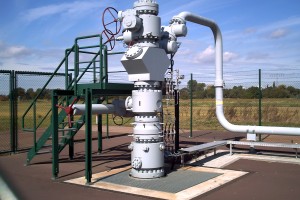What is process safety review?
Process safety review is a planned and systematic brainstorming meeting for identification of potential hazards, assessment of risk and reviewing the readiness and effectiveness of risk control measures to ensure safety for personnel and equipment systems in a process plant.
Objective of safety review
The objective of safety reviews is to ensure the design and installation of a process plant is in compliance with standards and guidelines regarding not only safety and operability but also regarding health and environmental issues.
Safety reviews may also be carried out for existing, older plants, where a number of modifications to the original design may have been carried, to review the impact of modifications on safety, operability, health and environmental aspects.
Methods for safety review of process design
There are various methods for reviewing safety and operability aspects of the hardware in a new installation or existing plant. A special form and most applicable of safety review is the HAZOP study. Throughout the life cycle of a project, some other safety review methods such as Model reviews, Fire Safety Review, Quantitative Risk Assessment, Pre-start-up Safety Review (PSSR) are also conducted at specific stages in a project for different purposes.
Scheduling of safety reviews in a project
For new processing / manufacturing plants, safety review should be carried out at specific stages during project’s progress, e.g. a HAZOP at the end of the basic engineering phase and a Pre-start-up Safety Review (PSSR) at the end of the implementation phase (prior to commissioning).
For existing plants, the reviews normally should be conducted every 4-5 years for a normal risk facility, 2-3 years for a high risk facility or after revamps or capital modifications.
A safety review on a 'Plant Model' is another effective way to improve on safety and operability of a new plant. This carried out throughout the implementation phase of a project.
Whilst safety reviews include many aspects related to fire safety, comprehensive fire safety reviews are normally carried out parallel to HAZOP study for new plants or for existing units.
HAZOP Study
HAZOP (HAZards and OPerability) can be defined as: The application of a formal and systematic critical examination of the process and engineering intentions of the new facilities, to assess the hazard potential of mal-operation or malfunction of individual items of equipment and the consequent effects on the facility as a whole. A HAZOP study is conducted as a meeting between engineers designing a facility and those operating this facility. Wide range of abnormal operating scenarios are discussed one by one to find out their impact and hazard potential on newly designed and existing facilities.
Model Review
Models for processing units/facilities in oil refineries or chemical process plants are normally built during the detailed engineering phase of a project. The Model Review is to facilitate the engineering and erection of units during construction phase, to provide a check on technical and personnel safety aspects, operability and maintenance aspects, etc.
Fire safety review
A Fire safety review is an assessment of fire risk from credible flammable release hazards associated with the infrastructure of selected plant sections. This enables subsequent assessment of the adequacy of the fire prevention and protection and fire fighting measures.
Pre start-up safety review (PSSR)
The PSSR is a safety review prior to start-up (commissioning) of a new or modified processing/manufacturing plant or facility to ensure installations meet the original design or operating intent, to catch and re-assess any potential hazard due to changes during the detailed engineering and construction phase of a project.




